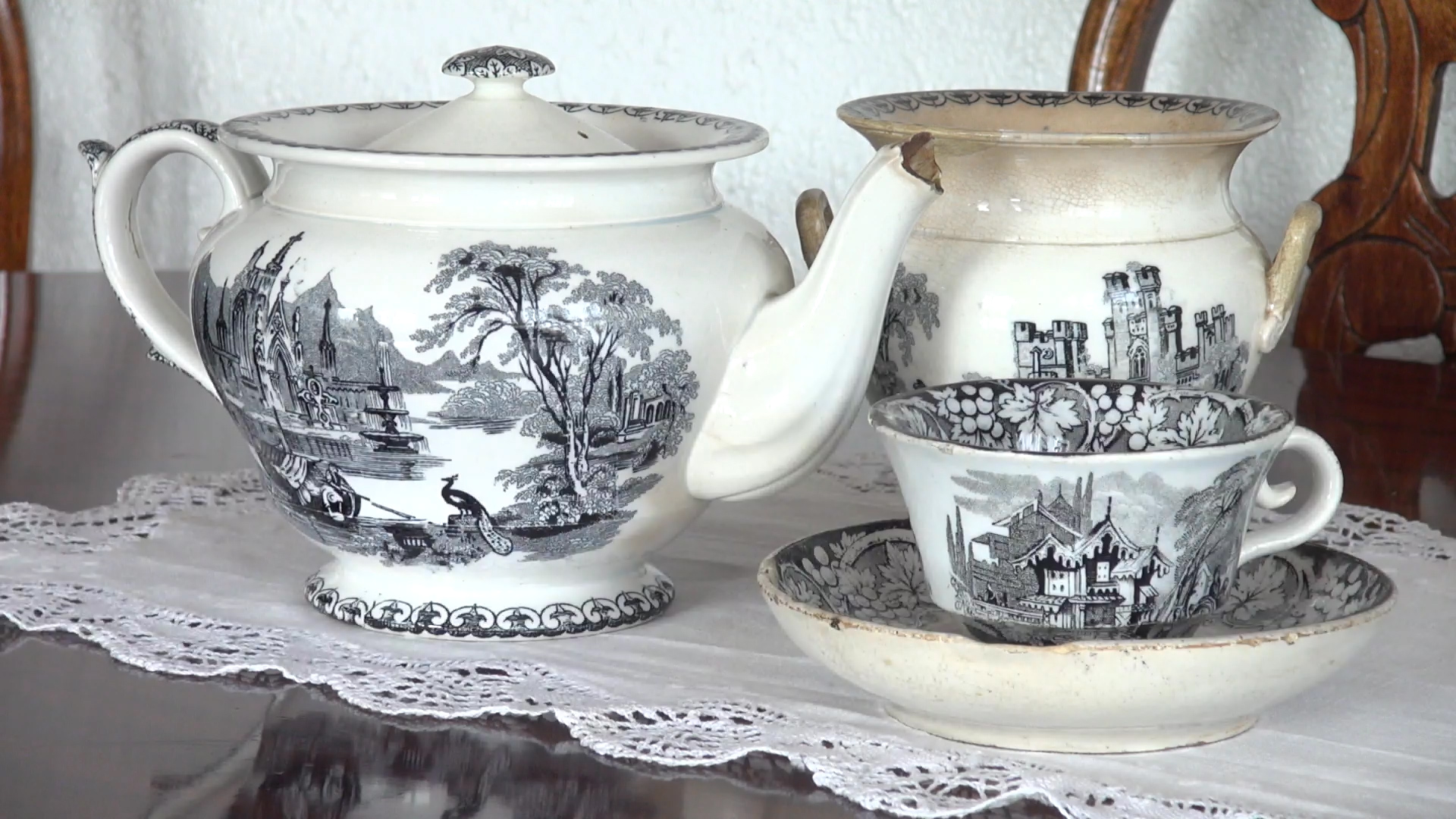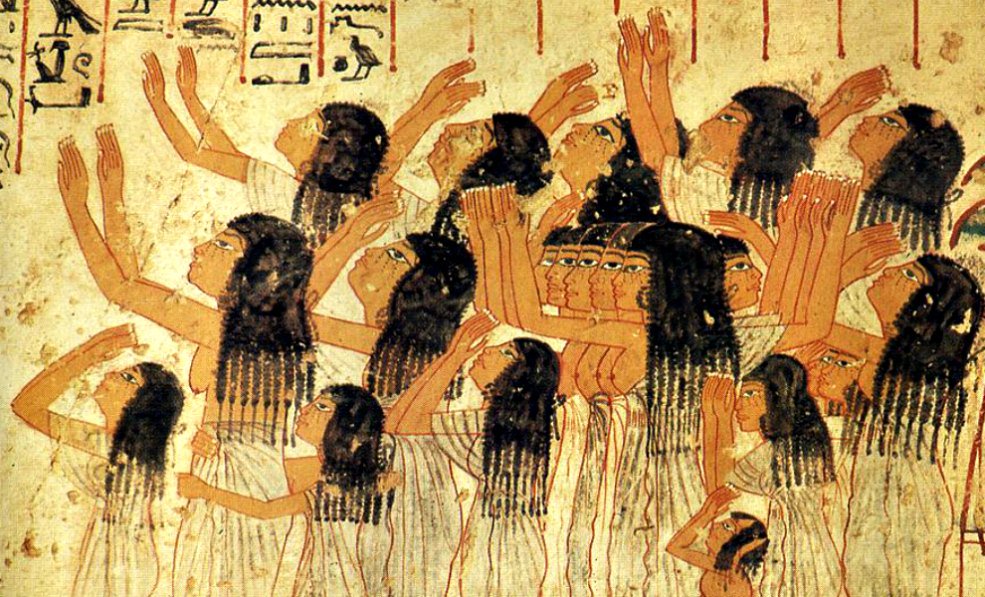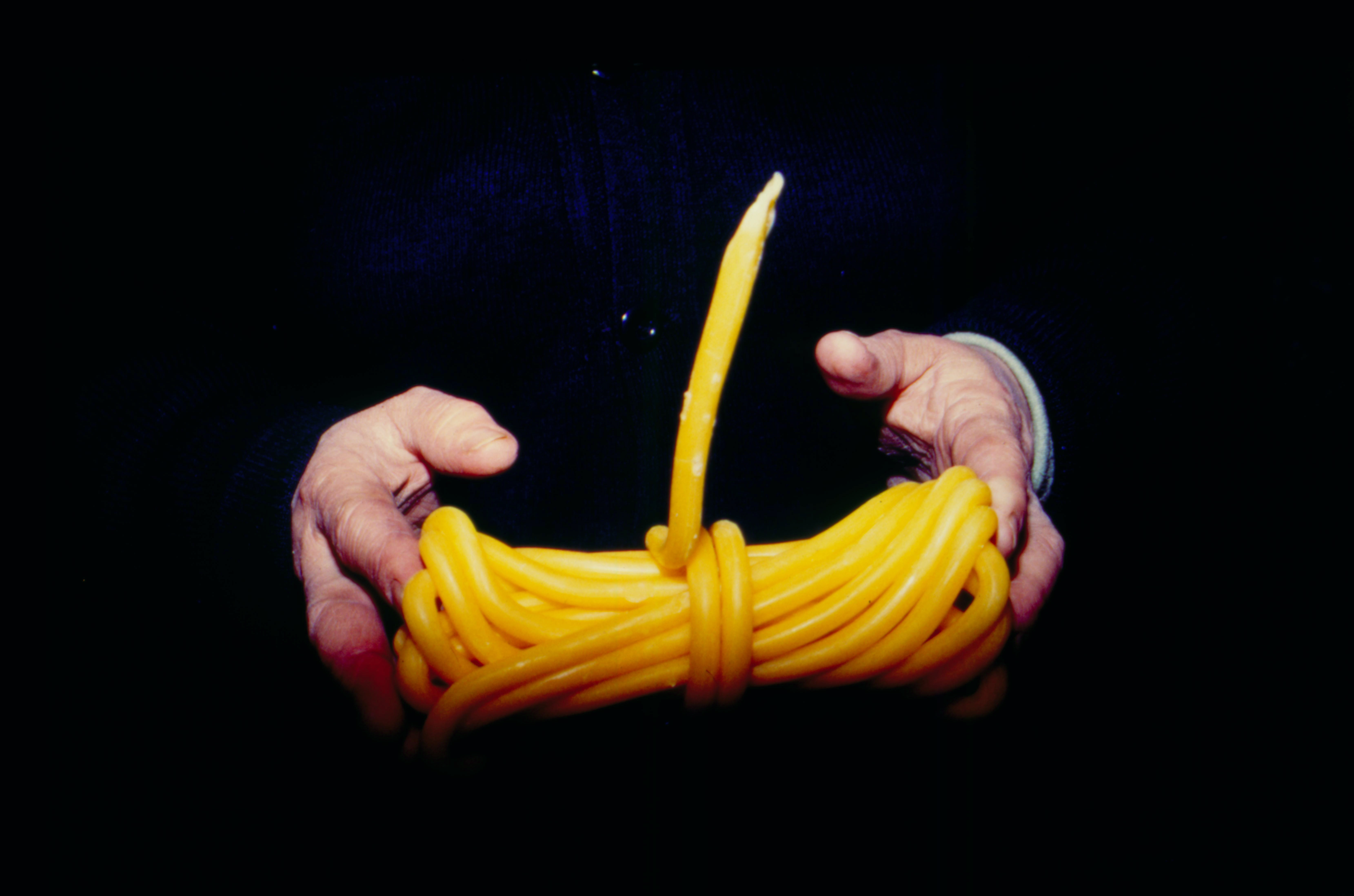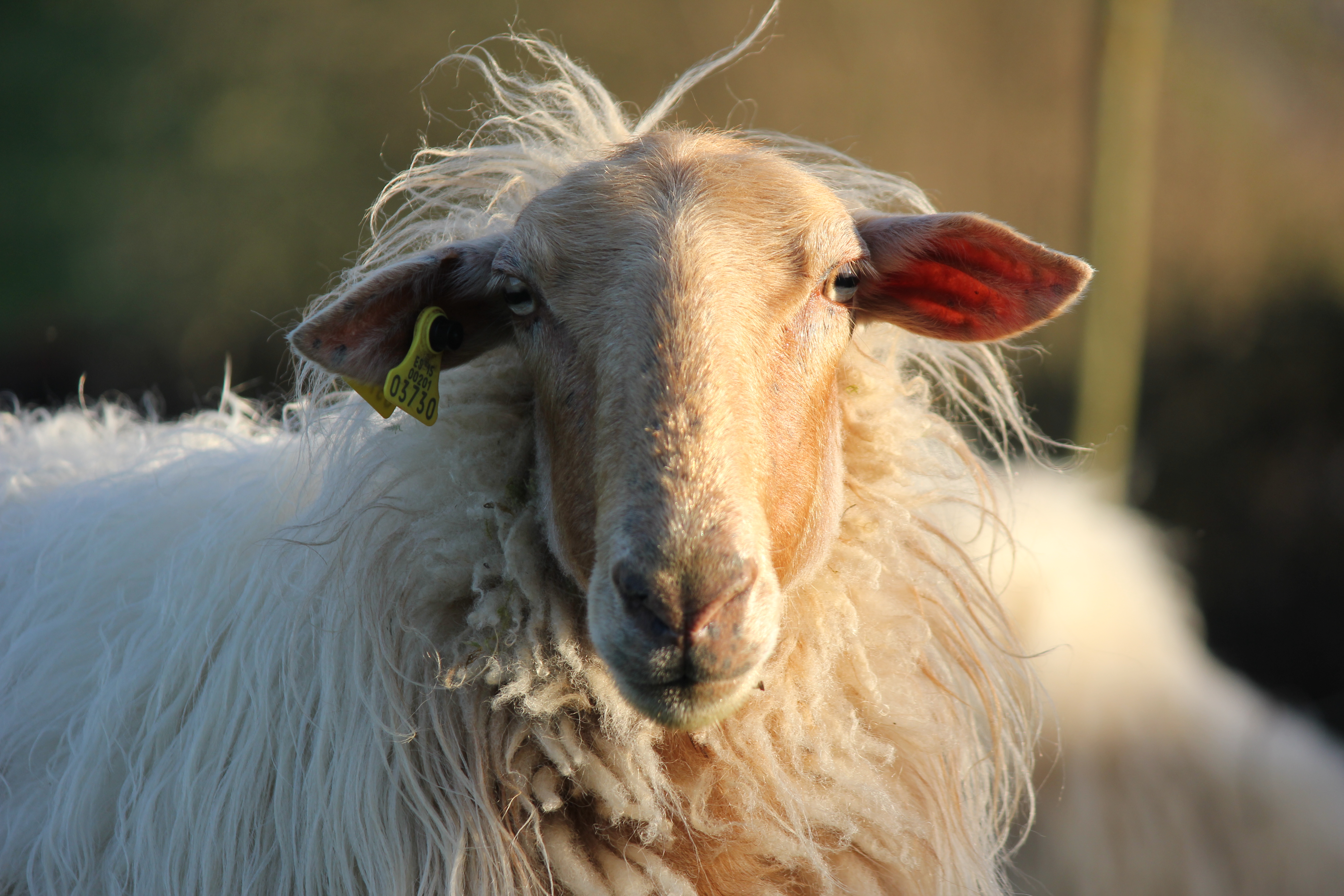Basque ethnography at a glance

Set of ceramics from Busturia. Labayru Fundazioa Photographic Archive.
St Mammes Ceramics in Busturia appears to have operated for barely a couple of decades, approximately from 1842 to 1862, and still remains largely unknown. It was erected on the ruins of an ancient tile factory in the neighbourhood of Axpe, on the right bank of the Urdaibai estuary opposite Kanala, on the site where the house known as Villa Matilde stands today. (more…)

Detail of mural paintings at Ramose’s tomb, c. 1350 BC. Photograph taken from ancient-origins.es.
Recitation of poetry at funeral ceremonies is a time-honoured occupation traditionally dominated by women. In fact, an elegy is typically a poem of lament for the dead. Professional mourning is still practiced in cultures across the globe and was once common here in the Basque Country. (more…)

Grave beeswax candle. Labayru Fundazioa Photographic Archive.
Field research shows relevant participants in old-time funeral processions, usually relatives or neighbours of the deceased, bore offerings of bread and light to be placed on the symbolic family grave in church. This tradition remained in many parishes until the 1960s. (more…)


